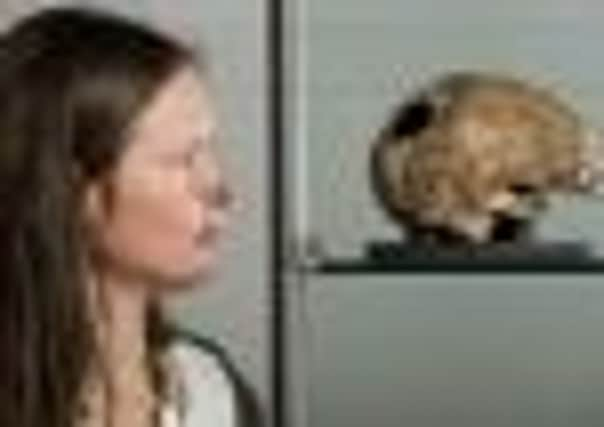Soldier’s scarred skull saved from scrap for display museum’s battlefield exhibition


Years later, after his death, it was his skull put under threat when it was tossed out with the rubbish before being rescued by a descendant.
Now, more than 250 years on from the Battle of Prestonpans, the skull of cavalry officer Captain James Clarke is to return as the centrepiece of a new exhibition at Prestongrange Museum.
Advertisement
Hide AdAdvertisement
Hide AdA sword injury during the 1745 struggle left a 5cm hole in Clarke’s head, but the Hamilton’s Dragoons officer survived.
Thanks to his horse, he was carried off the battlefield and doctors put a silver plate on his skull after he was rushed to hospital over the Border.
After being removed in 1828 from the Nottinghamshire vault where it had been buried following Clarke’s death and transported to a descendant’s medical surgery for use as a macabre ornament, the skull was thrown out when the practice was sold in the late 19th century before being rescued and donated to London’s Royal College of Surgeons.
“The whole thing is truly remarkable,” said Arran Johnston, trustee at the Battle of Prestonpans (1745) Heritage Trust, which helped organise the exhibition with staff, including Katherine Weldon, from East Lothian Council’s museum service.
“We know very little about this soldier himself and there are no other human remains from the battle that we could expose like this. It’s an absolutely unique insight the public are getting.
“Prestonpans was not a large battle in terms of numbers, but many people at the time commented on the severity of the injuries. There would have been lots of blood and severed limbs.”
Exhibited alongside other war relics and sections of the Prestonpans Tapestry, organisers – who began preparing the exhibition after descendants of Clarke contacted them last year – hope the appearance of the skull will increase appreciation of the battle’s impact on Scotland’s culture and boost trust efforts to open a £2 million visitor centre dedicated to the event.
Mr Johnston said: “Prestonpans was very significant – not in terms of the rebellion’s outcome but rather its artistic and cultural legacy, with all the songs, poems and art it inspired.”
Advertisement
Hide AdAdvertisement
Hide AdLocal historian and author Roy Pugh said: “East Lothian was the site of a number of major battles during the Jacobite Rebellion and this was one of them. It was also one of the few that ended in victory for the Scots.”
Redcoats outflanked and trapped
THE Battle of Prestonpans was the first significant conflict in the Jacobite Rising of 1745.
It took place at 4am on September 21, 1745, with the army loyal to James Francis Edward Stuart, and led by his son Charles Edward Stuart (Bonnie Prince Charlie), achieving a major victory over Sir John Cope’s redcoats.
The battle was known initially as the Battle of Gladsmuir but was fought at Prestonpans in East Lothian, on the town’s border with Tranent, Cockenzie and Port Seton. The battle was over in less than 15 minutes after Cope’s men were outflanked and trapped.
The victory was a huge morale boost for the Jacobites and was later mythologised in art and song.